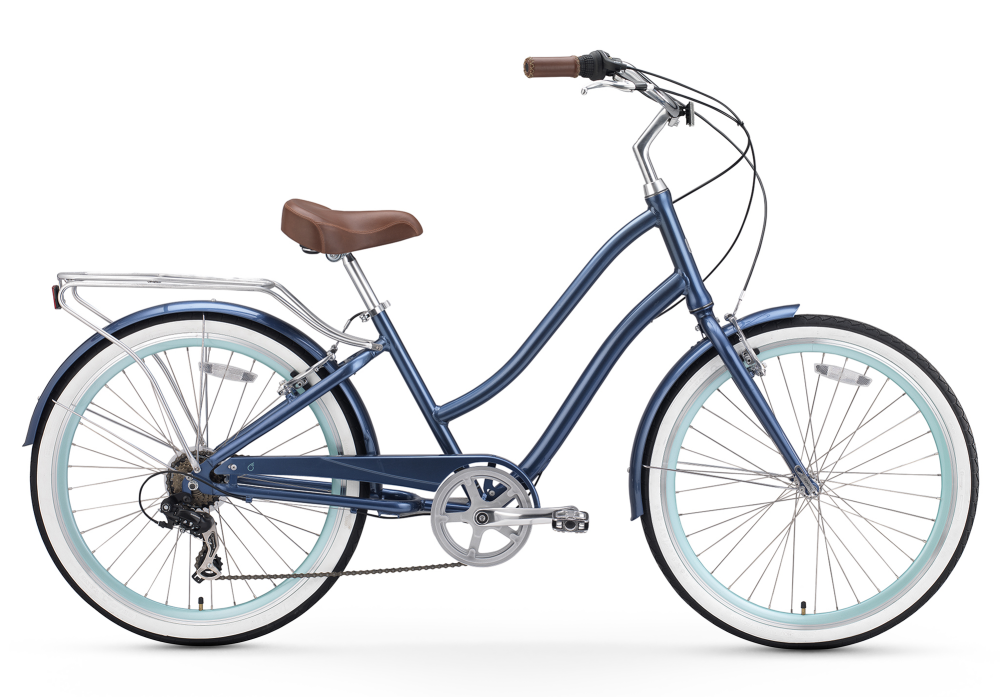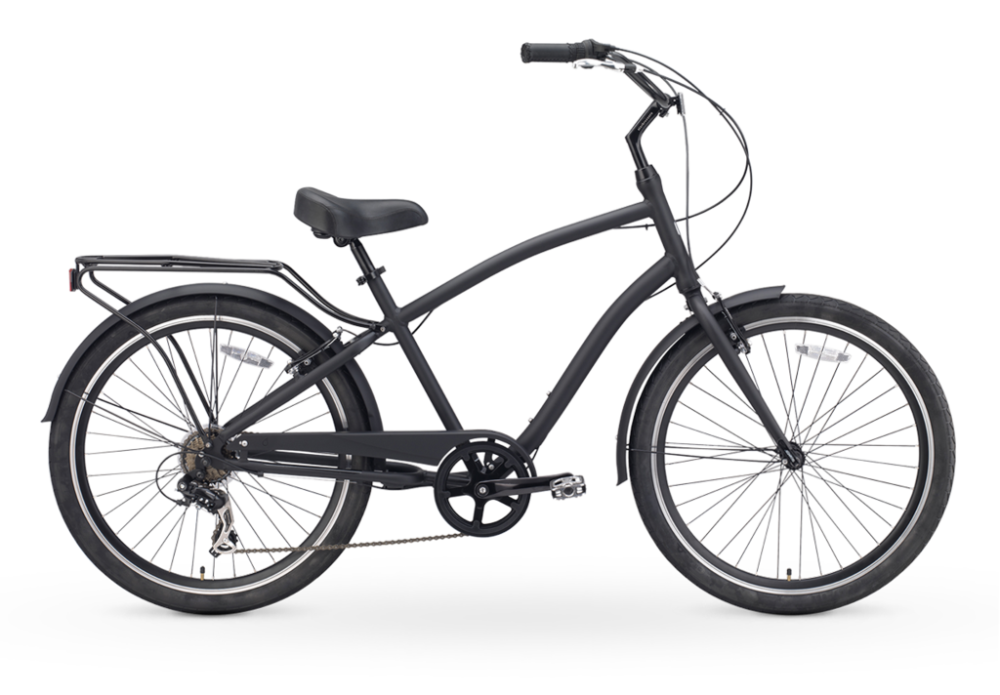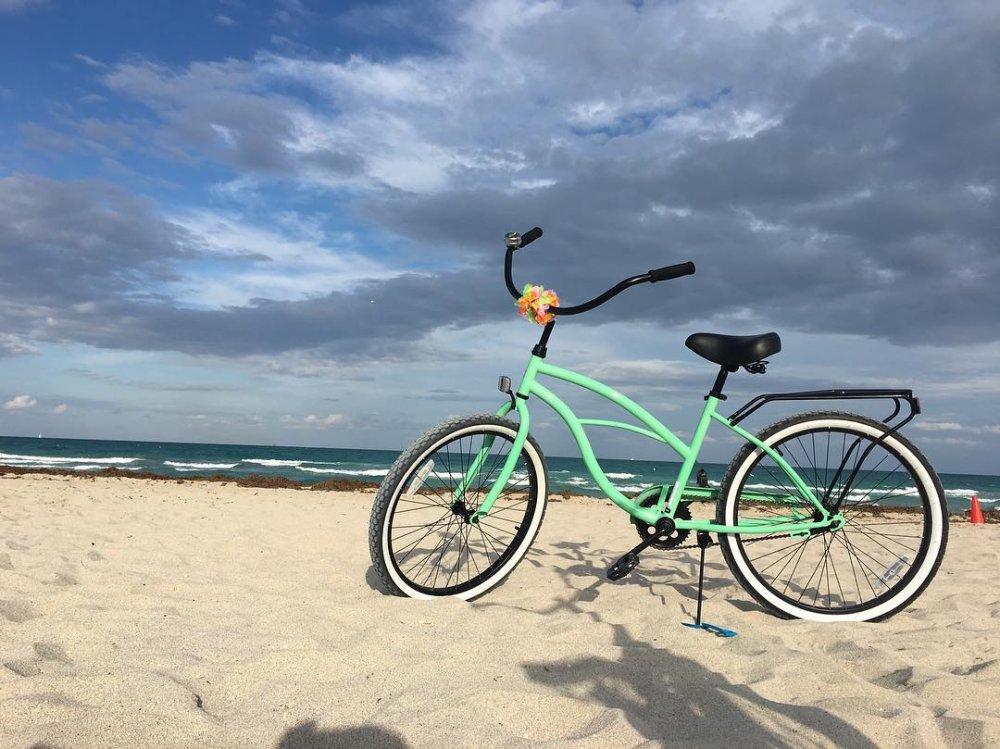E-Bikes & Bikes Customised to You
Love the idea of cruising the beach or city in style? An electric cruiser bike is the way to go!
Cruisers are great because they have high handlebars and a large, supportive seat to help you sit upright and stay comfortable on long rides. Worry less about your posture and minimize muscle soreness while still getting a great workout.
However, as with any big purchase, it's best to do your research so you can find the perfect cruiser for your needs. After careful consideration, you'll feel more confident in your top picks for a new cruiser.
Here are the 10 things I wish I knew before purchasing a cruiser bike. Hopefully, you can consider these things too, and then it won't be long until you're cruising off into the sunset on a nice new ride!
1. Cruiser Terrains
What terrains are suitable for cruisers? A cruiser bike is designed to be able to roll on both pavement and hard packed trails. The wider tires will typically do well on bumpy and uneven terrain. With that said cruiser bikes are not designed for major off road riding. They are really made for pavement riding even with the wider tire. The wide tire acts as a shock absorber for the bumps and bruises you may roll over during rides. If one day you feel like riding on pavement and the next a hard packed trail, by all means go for it!
2. Cruiser Bike Tires
When buying a cruiser bike look at the wheel size and thickness for a better idea of what to expect. Semi-slick tires are great for smooth rolling and stable riding. Otherwise, even thicker fat tires are a popular choice as well.
At the end of the day, you need wheels and tires that will last for a long time. Take a closer look at the tire brand and wheel design, including what fellow riders say about them in the reviews. If others love how the cruiser rolls on the beach or down nature paths, then you can feel more comfortable riding that way, too.
Remember, 24"-26" wheels are typically for cruiser bikes. Tires should be between 1.75” and 2.125” thick for optimal performance on pavement. But many riders choose cruisers now a days that are 3" wide. The wider tire provides a "cool" look but also provide an extra soft ride. Although with a tire that thick it will be challenging to pedal. You'll want to choose a tire that can provide you a cushy ride but also still be relatively easy to pedal. Cruisers are all about providing a relaxed ride so you don't want to have to be working extra hard to keep the bike moving.
3. Types of Cruiser Bikes
Let's take a moment to talk about the comfort of different cruiser designs. A traditional cruiser has balloon tires, coaster brakes, high handlebars, and a padded seat for extra comfort. Unlike commuter bikes, where riders usually hunch forward, cruiser bikes encourage upright posture to maximize comfort and minimize next-day soreness. The handlebars usually swoop in towards the rider's body so their arms can be relaxed when grabbing the handlebar grips. This sitting position will reduce the tension on the lower back, upper back and shoulders during and after rides.
While classic cruiser bikes are made with the beach in mind, there are hybrid cruiser bikes that support both upright riding and crouched postures for faster speeds. If you want a cruiser bike inspired by mountain riding, then a hybrid bike may be more your style.
Otherwise, you can take your pick of classic and stretch beach cruisers. Original cruiser bikes boast the same popular characteristics as in past decades, with a large frame weighing around 50 pounds and a low, broad saddle with springs to absorb stress. A classic cruiser features a single-speed chain and chain guard cover, with tall handlebars wrapping around either side. With a classic cruiser, you can steer while upright. The less leaning forward, the more comfortable you should feel.
Although there's lots to love about a classic cruiser, stretch cruisers also appeal to many cyclists, especially those starting out who are intrigued by the aesthetic appeal of this style. As an enlarged version of classic cruisers, stretch cruiser bikes have a longer frame and sit closer to the ground. This allows you to sit further back in an extra comfy posture, even though the steering isn't quite as accurate. Stretch cruisers are best reserved for relaxed riding on smooth, level roads with few obstructions.
4. Ergonomic Design
The cruiser frame is essential to the overall comfort of this bike style, but ergonomic features like the seat and handlebars make a big difference too. Before buying a cruiser bike, you may want to check out several options to see which saddle most strikes your interest. An extra-wide, foam-filled seat delivers greater comfort for long rides, while soft grip handlebars will help you feel more at ease while cruising, too.
Also, the best cruiser bikes are built with a step-through frame, making it super easy to get on and off without hitting your shins on the pedals. All of the ergonomic features on a cruiser bike make it a smart investment if you want to do beach or city rides more often. If you've only had a road, commuter, or mountain bike before, you'll find that a cruiser bike has a different feel, with comfort and control as the top priorities in these bike designs.
Some types of cruiser bikes also have what is called a forward pedaling design. This means that the pedals are moved slightly forward from where they are on a traditional bike. This allows the bike seat to be moved lower to the ground so the rider can get their feet flat on the ground when stopped. It's a safety and comfort feature. Instead of having to be on the balls of your feet to get proper leg extension, you can have your feet flat and get proper leg extension when pedaling. This is because you will get the extra leg extension by way of the pedals being moved forward. It's a nice feature that provides a very comfortable ride. The only downside is hills may be more challenging because riders won't as easily be able to stand up when pedaling.
5. Cruiser Speeds
Would you prefer a single-speed drivetrain or a speed shifter? Consider the gearing and brakes on different cruiser bike models before deciding on your preferred brand and style. Cruiser bikes can come in various speed options and brake options. In 1950s cruisers were traditionally only available in single speeds with coaster brakes. But times have changed and now you can get a cruiser in essentially any speed bikes are made in, single, three, seven or 21 speeds.
A single-speed cruiser is best for flat, smooth terrain and slower travel. With only one gear you won't have the option of shifting gears to help you on hills. But for flat ground that single gear should be setup perfectly.
As cruiser bikes make a comeback, more and more models come with a rear derailleur and front/rear hand brakes. The more gears there are, the more resistance and speed you have, making these cruisers better for terrain riding. Three, six, and seven-speed shifters are common in multi-speed cruisers, giving you more options to go as fast or as slow as you'd like.
A multi-speed electric cruiser bike gives you a power boost to reach speeds ranging from 15-28 miles per hour, depending on the mode. Check the maximum speeds and drivetrain information on different cruisers to discover the perfect ride for your cruising goals.
6. Cruiser Sizing
Something else to know about cruisers is that they come in men's and women's sizes and are tailored to users of certain heights. Make sure to check the minimum/maximum rider height before selecting a cruiser bike, and see what kind of customization options are available with different brands. Remember, the step-through frame of cruiser bikes is easier to mount and dismount, but it's still important to have adjustable features to ensure the best fit.
Cruiser bike sizes vary from road and mountain bike sizes, which are based on the frame rather than the wheel diameter. The majority of cruiser bicycles come in 24" or 26" wheel sizes for adults, although slightly smaller and larger rims are available from some bike companies. Hybrid cruisers have stretched frames and extended cranks if you want to stretch your legs even more.
7. Frame Materials
Many bike manufacturers offer at least one, if not several, cruiser models, with the most common frame materials being aluminum, steel, carbon fiber, and titanium. Aluminum is great because it's lightweight, perfect for women's cruiser bikes and beginners. A high-strength aluminum frame won't rust and supports thicker balloon wheels, but it doesn't absorb the road quite like steel. A steel cruiser bike frame is durable and long-lasting on a variety of terrains and often used for vintage bikes.
Titanium is super lightweight but very expensive, making it more of a niche material compared to the other more affordable options. Carbon fiber is a composite blend of metals and plastic, offering a lightweight and strong frame that distributes stress throughout the shell.
While purchasing a cruiser bike, pay attention to the frame material as well as the sizing chart to ensure a great fit. A few key measurements to keep in mind are the saddle height, distance from saddle to handlebars, and overlap between the front wheel and your feet. You should feel comfortable standing with your feet on either side of the bike, and it should be easy to get on and off. That's why choosing the right frame design and size is so important.
8. Maintenance Requirements
Modern cruiser bikes are made to last, and models requiring minimal maintenance are an excellent choice, so you can focus more on riding and less on cleaning your bike. Look for rust-resistant materials like aluminum and anti-rust components such as the gears and chains. The more protected your cruiser is against rust, the better.
Front and rear fenders prevent mud spray and help keep your bike clean, supporting a longer lifespan as well. Keep in mind, aluminum frame cruisers are resistant to both moisture and rust, so you may ride for several years before any noticeable signs of wear and tear appear. It's still important to follow the manufacturer's recommendations on washing and maintaining your bike. A monthly clean is a good idea to eliminate dirt, dust, debris, and excess water from interacting with metal components.
9. Storage Space
Cargo storage is an awesome feature on cruiser bikes, especially if you like longer rides and adventuring down the beach or up in the hills. Many people think of cargo attachments as an add-on, but a lot of cruiser bikes come with storage components already built-in. Make sure to check the cargo options on your top pick for a new cruiser bike, as a front or rear rack or basket can make a big difference to your ride.
Speaking of storage space, the handlebars are worth thinking about, too. What is the handlebar design - how clean or cluttered is this area? Do you prefer a built-in basket or something you can attach and detach as necessary? Don't forget to look at the LCD display as well to make sure it's a suitable size without taking up too much space on the front of your bike.
10. Battery Life
Electric cruiser bikes take riding to the next level with reliable battery power, providing greater speed and performance compared to standard pedal bikes. You can still pedal as much as your heart desires, but with different modes and speeds to back you up and make cruising a breeze. Plus, electric cruiser bikes reach impressive speeds and support long rides, so you could cruise all day without needing to recharge.
That being said, not all bike batteries are created equal, and it's important to check the battery specifications of each cruiser bike to help narrow down your options. Lithium-ion battery voltage, charging time, and distance range all factor into overall cruiser bike performance. Also, see what the battery storage area is like, and whether the design is discreet enough for your liking. It helps when bike batteries are easily accessible for removable charging.
Bonus #11! Cruiser Costs
Last but not least, it's important to consider the cost of different cruiser bikes and how much you're willing to spend. A cruiser electric bike from a reputable brand could cost anywhere from $700 to $2,000 or more. While a cruiser e-bike costs more than a standard cruiser with no battery power, you can get impressive pedal assistance and make your trips last longer with fun cruising speeds and impressive maximum distance.
Other factors that contribute to the cost of a new cruiser bike include the battery design, ergonomic support, and tech upgrades. If you want a brand new model with all the bells and whistles, expect to pay more for that level of quality than an earlier version of the same bike. If you're just starting out and want to cruise up and down the beach, a standard beach cruiser may be perfect for you.
As you get more comfortable cruising around, you can always upgrade to a more enhanced model with extra tech integrations, cargo space, and display settings. Just think about how much riding you plan to do and how much money you're happy to spend on a worthwhile investment that offers long-term exercise and entertainment.
Don't forget to look out for specials from some of the most well-known cruiser bike brands. As they make way for new models, some of the older yet still popular cruiser bike styles may go on sale. It's a great opportunity to get your hands on a tried-and-tested cruiser bike many other riders love.
Find Your Perfect Cruiser Bike
Now that you know these top 10 considerations when buying a cruiser bike, you can better explore your options and find the cruiser that suits you best. Check out the top-selling electric cruisers for men and women on sixthreezero.com today.
Fit










